Abstract
Serum bile acid classes have been studied in 15 patients with primary biliary cirrhosis in five patients with cholestasis, and in five patients who had cirrhosis without cholestatic features. Conjugated monohydroxy bile acids (12-35% serum total bile acids) were found in eight of 11 sera from patients with primary biliary cirrhosis, in sera from four patients with cholestasis but not in any of the five patients with cirrhosis. The glycine conjugates/taurine conjugates (G/T) ratio in eight of 11 patients with primary biliary cirrhosis and two of four patients with cholestasis was <1·0.
Bile acid concentrations in seven patients with primary biliary cirrhosis were measured before and during cholestyramine therapy. Decreases in serum total bile acid concentrations were observed which were accompanied by small increases in the trihydroxy/dihydroxy ratio and also in the G/T ratio in six of the seven patients. No association was found between the concentration of any particular conjugated or free bile acid and the presence or absence of pruritus.
Full text
PDF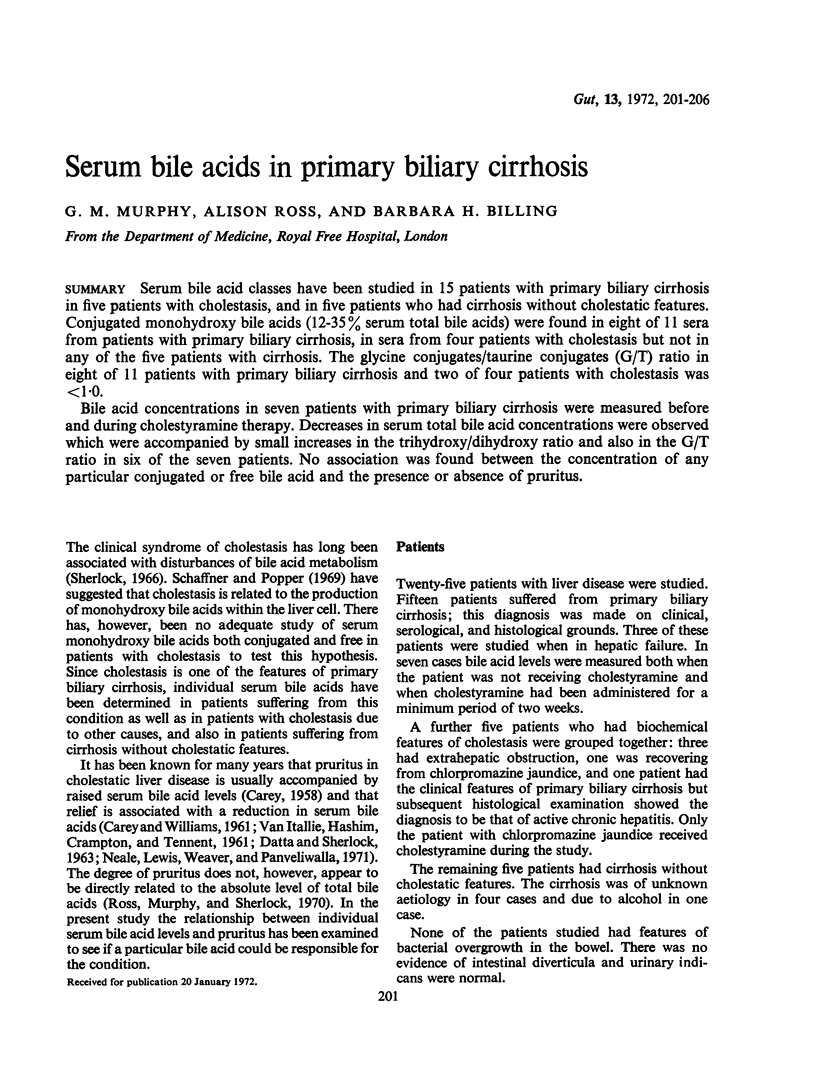

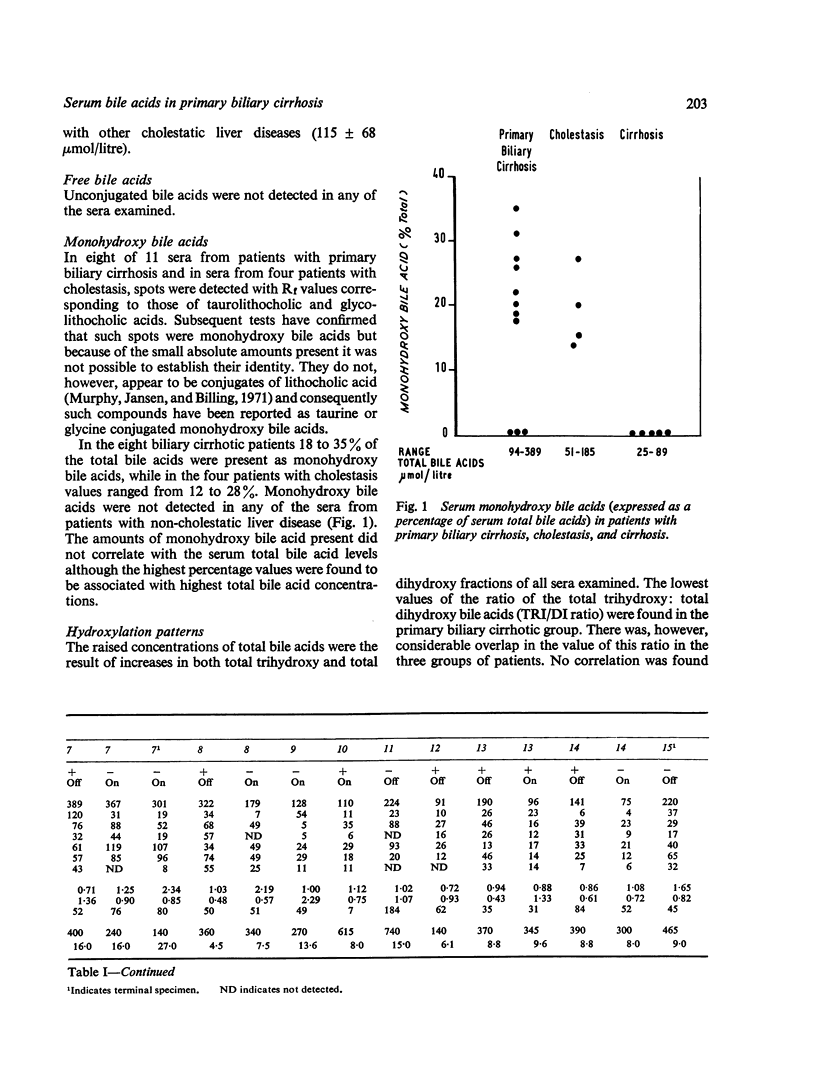
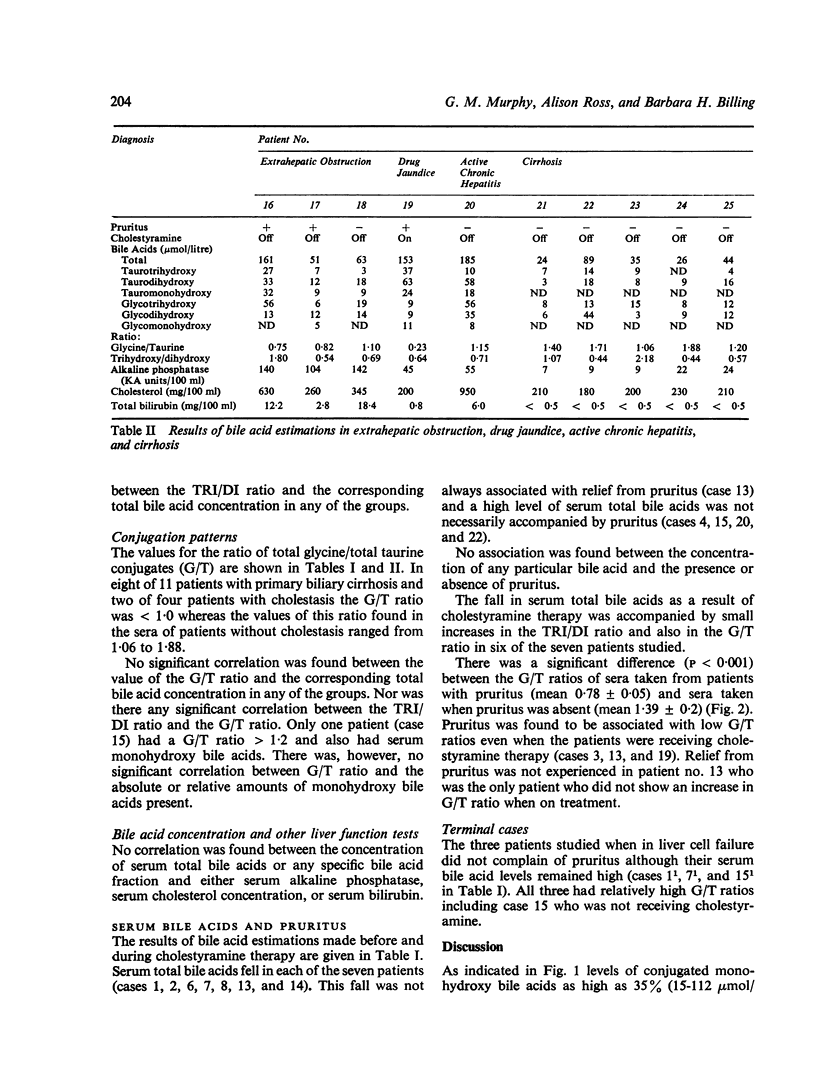
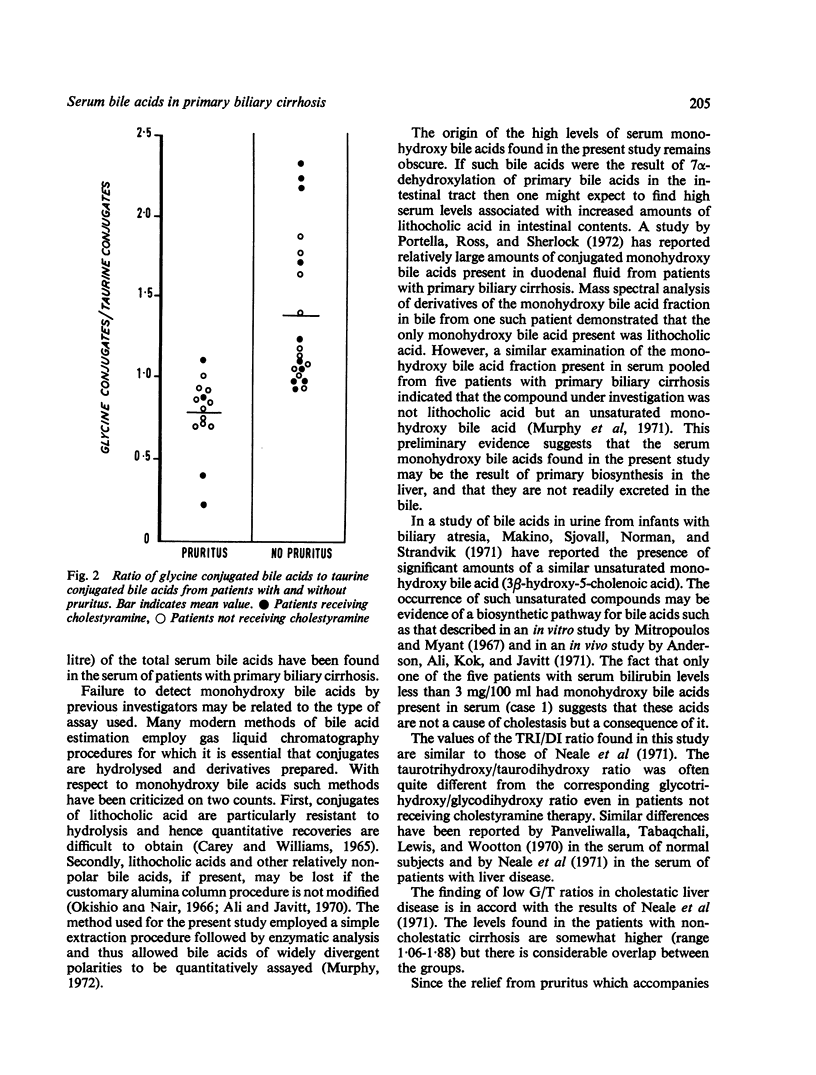
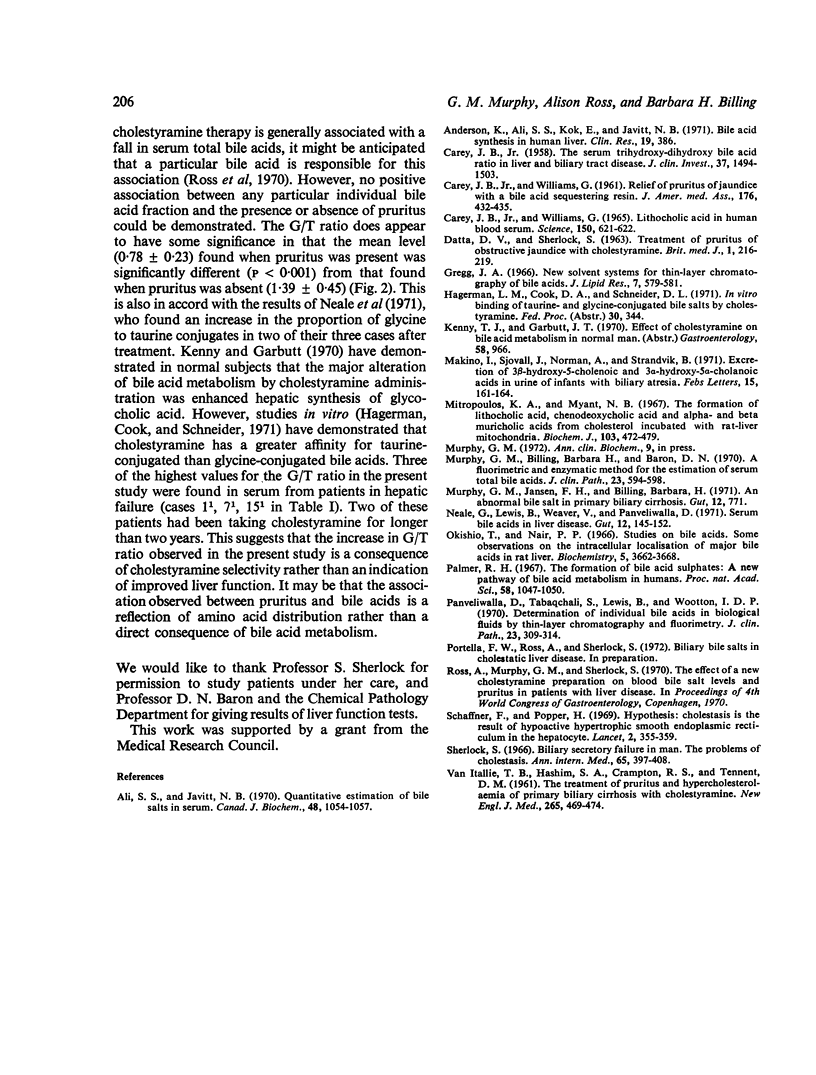
Selected References
These references are in PubMed. This may not be the complete list of references from this article.
- Ali S. S., Javitt N. B. Quantitative estimation os bile salts in serum. Can J Biochem. 1970 Sep;48(9):1054–1057. doi: 10.1139/o70-166. [DOI] [PubMed] [Google Scholar]
- CAREY J. B., Jr The serum trihydroxy-dihydroxy bile acid ratio in liver and biliary tract disease. J Clin Invest. 1958 Nov;37(11):1494–1503. doi: 10.1172/JCI103741. [DOI] [PMC free article] [PubMed] [Google Scholar]
- CAREY J. B., Jr, WILLIAMS G. Relief of the pruritus of jaundice with a bile-acid sequestering resin. JAMA. 1961 May 6;176:432–435. doi: 10.1001/jama.1961.03040180034008. [DOI] [PubMed] [Google Scholar]
- Carey J. B., Jr, Williams G. Lithocholic acid in human-blood serum. Science. 1965 Oct 29;150(3696):620–622. doi: 10.1126/science.150.3696.620. [DOI] [PubMed] [Google Scholar]
- DATTA D. V., SHERLOCK S. Treatment of pruritus of obstructive jaundice with cholestyramine. Br Med J. 1963 Jan 26;1(5325):216–219. doi: 10.1136/bmj.1.5325.216. [DOI] [PMC free article] [PubMed] [Google Scholar]
- Gregg J. A. New solvent systems for thin-layer chromatography of bile acids. J Lipid Res. 1966 Jul;7(4):579–581. [PubMed] [Google Scholar]
- Makino I., Sjövall J., Norman A., Strandvik B. Excretion of 3beta-hydroxy-5-cholenoic and 3a-hydroxy-5a-cholanoic acids in urine of infants with biliary atresia. FEBS Lett. 1971 Jun 10;15(2):161–164. doi: 10.1016/0014-5793(71)80047-9. [DOI] [PubMed] [Google Scholar]
- Mitropoulos K. A., Myant N. B. The formation of lithocholic acid, chenodeoxycholic acid and alpha- and beta-muricholic acids from cholesterol incubated with rat-liver mitochondria. Biochem J. 1967 May;103(2):472–479. doi: 10.1042/bj1030472. [DOI] [PMC free article] [PubMed] [Google Scholar]
- Murphy G. M., Billing B. H., Baron D. N. A fluorimetric and enzymatic method for the estimation of serum total bile acids. J Clin Pathol. 1970 Oct;23(7):594–598. doi: 10.1136/jcp.23.7.594. [DOI] [PMC free article] [PubMed] [Google Scholar]
- Neale G., Lewis B., Weaver V., Panveliwalla D. Serum bile acids in liver disease. Gut. 1971 Feb;12(2):145–152. doi: 10.1136/gut.12.2.145. [DOI] [PMC free article] [PubMed] [Google Scholar]
- Okishio T., Nair P. P. Studies on bile acids. Some observations on the intracellular localization of major bile acids in rat liver. Biochemistry. 1966 Nov;5(11):3662–3668. doi: 10.1021/bi00875a040. [DOI] [PubMed] [Google Scholar]
- Palmer R. H. The formation of bile acid sulfates: a new pathway of bile acid metabolism in humans. Proc Natl Acad Sci U S A. 1967 Sep;58(3):1047–1050. doi: 10.1073/pnas.58.3.1047. [DOI] [PMC free article] [PubMed] [Google Scholar]
- Panveliwalla D., Lewis B., Wootton I. D., Tabaqchali S. Determination of individual bile acids in biological fluids by thin-layer chromatography and fluorimetry. J Clin Pathol. 1970 May;23(4):309–314. doi: 10.1136/jcp.23.4.309. [DOI] [PMC free article] [PubMed] [Google Scholar]
- Schaffner F., Popper H. Cholestasis is the result of hypoactive hypertrophic smooth endoplasmic reticulum in the hepatocyte. Lancet. 1969 Aug 16;2(7616):355–359. doi: 10.1016/s0140-6736(69)92704-4. [DOI] [PubMed] [Google Scholar]
- Sherlock S. Biliary secretory failure in man. The problem of cholestasis. Ann Intern Med. 1966 Sep;65(3):397–408. doi: 10.7326/0003-4819-65-3-397. [DOI] [PubMed] [Google Scholar]
- VAN ITALLIE T. B., HASHIM S. A., CRAMPTON R. S., TENNENT D. M. The treatment of pruritus and hypercholesteremia of primary biliary cirrhosis with cholestyramine. N Engl J Med. 1961 Sep 7;265:469–474. doi: 10.1056/NEJM196109072651004. [DOI] [PubMed] [Google Scholar]


